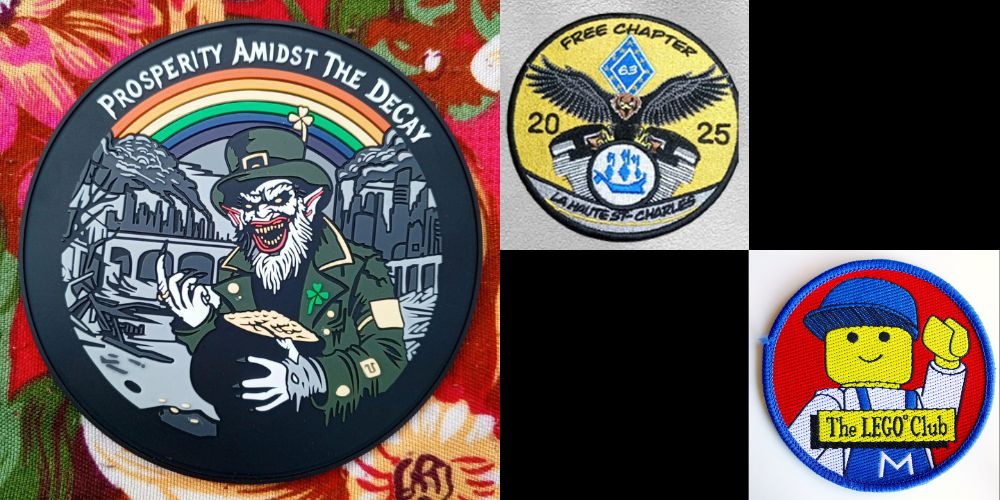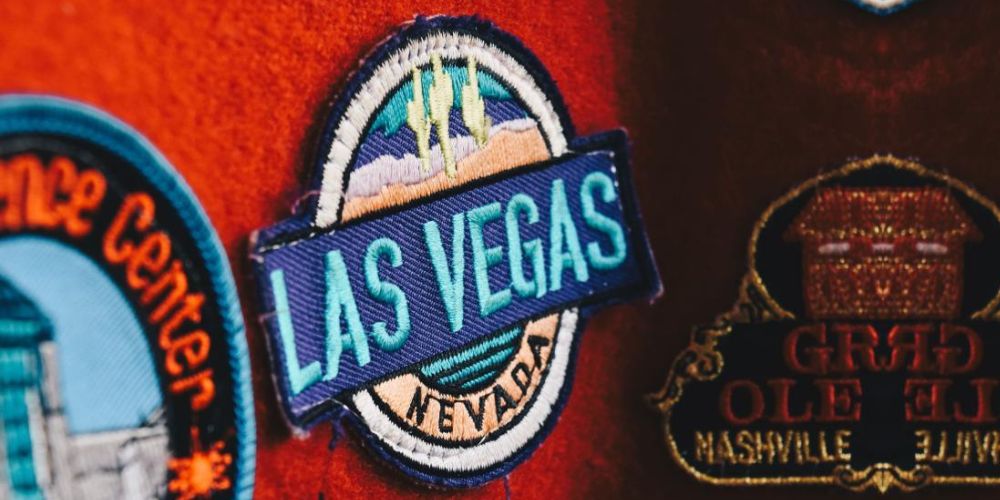When it comes to custom patches, the right type of patch can really make a difference in how your design stands out. Embroidered, Dye Sublimation and Woven Patches are three of the most popular options, each with its unique features, benefits, and ideal use cases. Here is a list of the key differences to help you make the right decision for your needs.
What Are the Three Different Types of Patches?
The three types of patches are Embroidered Patches, Dye Sublimation Patches, and Woven Patches. Each has its own set of advantages when it comes to design, durability, and versatility. Knowing the differences will help you choose the best option for your specific project or branding needs.
Embroidered Patches
Often referred to as a cloth badge, an embroidered patch is a piece of embroidery created using thread and a fabric backing. The art of making embroidered patches is an old one that was done by hand. During the first half of the twentieth century, they were often embroidered by shiffli embroidery machine. Mass production has resulted from high-speed, computerized equipment. Traditional patches with texture can be made with motifs sewed onto a fabric base. Such patches are sturdy and can have bold or minimalist designs.
Sublimation Patches
Dye Sublimation patches provide high-resolution details and rich colors, allowing you to print photographic pictures or designs with intricate color blends onto a fabric patch. Sublimation printing employs heat to combine ink and fabric into one. First, a design is produced on specialized paper. When heated, the inks transform into gas, which then combines with the fabric to permanently print on it. They are ideal for elaborate designs and photographic images.
Woven Patches
Made with thin threads, woven patches allow for greater detail than embroidery while retaining some texture. Woven patches use a tight weave to weave the thread designs directly into the fabric, whereas embroidered patches use thick fabric on top of a backing fabric to create the design. They are a middle ground between embroidered and sublimated patches.
Also Read: PVC Patches vs. Embroidered Patches: Which One is Right for You?
Comparing Coating Effectiveness
The essential difference between Embroidered Patches, Dye Sublimation Patches, and Woven Patches is in the nature of the final product and its usage. How effective is the coating, its durability, and the application based on the backing options is presented below:
| Patch Type | Coating Effectiveness | Durability | Common Backings |
| Embroidered | Protective thread coatings prevent unraveling. | High: Resists wear and tear well. | Iron-on, Velcro, Sew-on. |
| Sublimated | Thin protective layers safeguard printed designs. | Medium: Colors may fade over time. | Iron-on, Adhesive. |
| Woven | Coatings help prevent fraying of woven threads. | Medium-High: Durable but less so than embroidery. | Iron-on, Sew-on. |
Also Read: How to Properly Attach Iron-On Patches to Clothes
Which one is better? Embroidered or Dye Sublimated Patches?
Let’s pit the designs head to head, comparing which of the two would be better at it:
Embroidered Patches
They give off that classic, tactile feel. Having threads stitched directly onto a base fabric, depth and dimension abound. Embroidered patches would be great with bold and straightforward designs such as logos or just text. Chances are though, it’d miss some details in sublimation.
Dye Sublimated Patches
Sublimation uses heat and dye to transfer your design directly into the fabric. The use of this method allows for very high-resolution images, gradients, and high detail, making it more ideal for complex artwork. However, as opposed to embroidery, sublimated patches are completely smooth in the surface.
Also Read: How to Make Dye Sublimation Patches DIY
What is the Difference Between a Sublimated Patch and a Woven Patch?
While both sublimated and woven patches provide detailed designs, their approach and outcome are quite different:
Sublimated Patches
Sublimation is actually dyeing the fabric using heat and ink. The design becomes part of the material, yielding bright colors that do not fade. They are ideal for gradient-color designs and photographic quality.
Woven Patches
Woven patches are actually a type of embroidery except that thinner threads are used in designing. Finer details can be achieved through this method than through embroidered patches but not as fine and smooth as with sublimation. Woven patches offer a mix of texture and detail, but it is best for moderately intricate designs.
Also Read: Custom Patches: The Ultimate Handbook for Unique Branding and Self-expression
Comparing Usage Scenarios
| Patch Type | Ideal Usage Scenarios |
| Embroidered | Uniforms, hats, jackets, and bold logos. |
| Sublimated | Event merchandise, promotional items, and detailed artwork. |
| Woven | Apparel branding, company logos, and text-heavy designs. |
Also Read: Top 10 Creative Uses for Professionally Designed Embroidered Patches by Xpress Patches
Final Assessment
The choice between embroidered and sublimation patches is based on the needs of your design and aesthetic preferences. Embroidered patches add texture and depth, while sublimation offers precision and vibrant detail. Understanding the differences between these patch types and others, such as woven patches, will ensure that your custom patches perfectly match your vision.
The difference in manufacturing processes, coating effectiveness, and usage scenarios ensures that your patches meet both functional and aesthetic requirements. Be it branding, personal expression, or team uniforms, the right patch type will make your design stand out.









